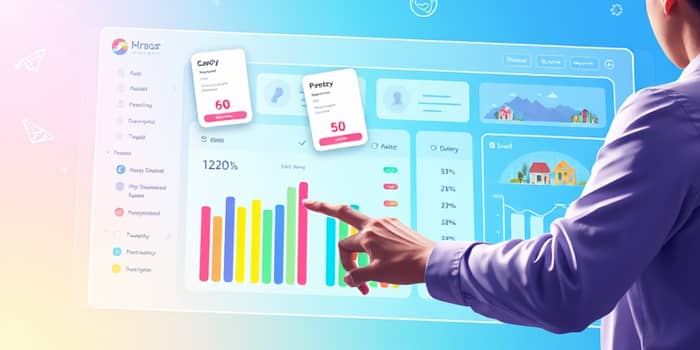In a world overflowing with insurance choices, finding the right policy can feel overwhelming. Modern comparison tools put comprehensive data and intuitive interfaces at your fingertips. By examining hundreds of dollars in premium differences, consumers can uncover tailored coverage that aligns precisely with their needs. This article explores how personalized filters transform the way we compare insurance offers, empowering you to make cost-effective, informed decisions.
Consider the case of Alex, a 35-year-old teacher who assumed her local provider offered the best rates. After running her profile through a comparison tool, she discovered two alternative policies that were nearly $500 cheaper annually while offering broader uninsured motorist coverage. This real-life example underscores the transformative potential of harnessing modern comparison technology.
Why Comparing Insurance Offers Matters
When it comes to insurance premiums, minor adjustments in risk factors can lead to significant price shifts. Studies show that even with identical driving profiles and vehicles, annual premium variations can span several hundred dollars. In fact, 43% of customers believe they pay too much for their current coverage, underscoring the need for robust comparison strategies. By evaluating multiple offers side by side, you gain insights into market dynamics, claim histories, and insurer expense models, ensuring you don’t overpay for similar protection.
Price variations arise from insurer administrative costs, claim payout patterns, and regional market pressures. Comparing policies highlights these hidden factors, revealing discounted rates, loyalty perks, and available bundling opportunities. Ultimately, investing time in comparison translates into tangible savings and improved coverage alignment.
How Modern Comparison Tools Work
Insurance comparison platforms like Insurify, The Zebra, and QuoteWizard harness advanced algorithms and partnerships with insurers to deliver accurate, real-time quotes. They pull ZIP code-level rate filings, factor in dynamic user profiles, and update data through secure API integrations. This approach ensures real-time comparison ensures accurate quotes that reflect current market conditions and promotional discounts.
Users provide details such as location, age, driving history, vehicle specifications, and desired coverage amounts. The platform’s AI engine then analyzes these inputs against a database of insurer offerings, generating a personalized shortlist of policies. By standardizing coverage parameters, you can directly compare liability limits, deductibles, and add-ons, removing guesswork from the process.
Behind the scenes, these platforms employ machine learning models trained on vast datasets of historical claims and premium outcomes. By identifying patterns in accident frequencies, regional risk factors, and driver behavior, AI engines can assign a risk score to each user. This score fine-tunes quote estimates, delivering proposals that more accurately reflect your risk profile. Over time, feedback loops refine these models, ensuring continual improvement in quote precision.
The Power of Personalized Filters
Filters are the cornerstone of customizing your search. They enable you to fine-tune results based on criteria that matter most, streamlining hundreds of options into a digestible selection. Leveraging personalized filters reduce complexity dramatically, guiding you toward policies that suit your lifestyle, risk tolerance, and budget.
Personalized filters not only narrow choices but also empower you to explore “what-if” scenarios. Want a lower deductible? Adjust the slider and immediately see the impact on premiums. Curious about adding rental car reimbursement or pet injury coverage? Toggle these options on and off to compare costs and benefits within seconds.
Common filter categories include:
- Type of insurance: auto, home, travel, renters, life, and more
- Coverage amount: liability limits, deductibles, optional add-ons
- Provider metrics: reputation scores, customer ratings, claims satisfaction
- Policy features: bundling discounts, telematics integration, roadside assistance
- User profile specifics: age, driving record, credit score, claims history
Top Comparison Platforms at a Glance
Each platform brings a unique approach to comparison:
The Zebra focuses on auto and home policies, leveraging data-driven insights to evaluate hundreds of insurers. Its dynamic profile-based system considers detailed user inputs to deliver multi-provider quotes in moments.
Insurify stands out with AI-powered recommendations and spam monitoring. It supports auto, home, and life insurance, guiding users toward bundling discounts and offering robust customer support.
QuoteWizard’s strength lies in its extensive provider network and intuitive profile matching. Users benefit from a clear interface and comprehensive coverage comparisons.
For travel insurance, Squaremouth excels with destination-based filters and side-by-side policy comparisons, while InsureMyTrip aggregates real-time quotes and allows users to tailor coverage for specific trip risks.
See the summary table below for a quick overview of features and policy types.
Beyond Price: Making an Informed Decision
Cost should be just one factor in your selection process. Evaluate each insurer’s reputation, customer service responsiveness, and claims processing efficiency. Many comparison tools surface real-time reviews and satisfaction metrics, helping you gauge provider reliability. Remember that the cheapest policy may come with coverage gaps or higher out-of-pocket costs in the event of a claim.
Imagine Sarah, who purchased the cheapest policy but struggled to secure adequate compensation after a hailstorm damaged her vehicle. Had she prioritized claim responsiveness and provider ratings alongside price, she might have avoided lengthy disputes and out-of-pocket expenses. This scenario highlights why holistic evaluation is critical.
Before finalizing, review policy details to ensure clarity on coverage limits, exclusions, and renewal terms. Transparency prevents unwelcome surprises and ensures your protection aligns with expectations, whether you face a minor fender-bender or a major disaster.
Enhancing the User Experience
Modern platforms offer features that extend beyond quote generation:
- Live support and chatbots for instant guidance
- Educational resources explaining policy terminology
- Bundling suggestions to optimize savings across multiple policies
- Seamless online application and digital policy delivery
Mobile apps extend this convenience by saving your profile and presenting push notifications when new discounts or provider ratings are available. Integration with telematics lets you monitor driving behavior and unlock safe-driver discounts automatically, enhancing user engagement and cost savings.
Data Security and Privacy Considerations
Entrusting your personal information to comparison platforms requires confidence in data protection measures. Leading sites employ secure handling and storage of data, using encryption protocols, GDPR-compliant practices, and strict access controls. User profiles are often stored in encrypted vaults, ensuring that sensitive details like credit scores and claim histories remain confidential.
Platforms often undergo third-party audits to verify compliance with industry standards like SOC 2 or ISO 27001. These certifications attest to rigorous security controls, from access management to vulnerability testing. By choosing platforms with published audit reports, you ensure your data travels through well-protected channels.
Tips for Getting the Most from Personalized Filters
To harness the full power of customization, follow these best practices:
- Start with accurate and up-to-date personal data to ensure relevant match results.
- Utilize a mix of cost and coverage filters to balance price with protection.
- Experiment with various filter combinations to uncover hidden discounts and unique policy features.
- Save your preferred filters and user profile for quick access during future visits.
- Review aggregated recommendations from AI engines for policy bundles or add-ons you may have overlooked.
Implementing these tips can dramatically improve the relevance of your results, uncover more savings pathways, and simplify future comparisons.
Conclusion: Empower Your Insurance Decisions
Comparing insurance offers with personalized filters transforms a complex marketplace into a navigable landscape of tailored options. By leveraging advanced algorithms, real-time data, and intuitive filtering mechanisms, you can identify policies that offer the right balance of cost, coverage, and customer satisfaction. Whether you’re insuring a vehicle, home, or vacation, this approach maximizes value and minimizes risk.
As insurance evolves with digital innovation, staying informed and proactive remains your best defense against overpayment and coverage gaps. Embrace the tools and strategies outlined here to navigate the insurance landscape with confidence and clarity.
References
- https://www.thezebra.com/auto-insurance/
- https://insurify.com/car-insurance/the-best-and-worst-sites-to-compare-car-insurance-quotes/
- https://policy-wizard.fas.harvard.edu/best-website-to-compare-insurance
- https://www.squaremouth.com
- https://ideausher.com/blog/developing-ai-powered-insurance-comparison-tool-like-insurify/
- https://statutes.capitol.texas.gov/Docs/TX/htm/TX.151.htm
- https://www.strikingly.com/blog/posts/discover-amazing-real-time-personalized-travel-insurance-comparison-tools










